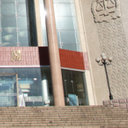Antioxidative Stress Effects of Salvia przewalskii Extract in Experimentally Injured Podocytes.
Ključne riječi
Sažetak
BACKGROUND
Oxidative stress is a leading cause of puromycin aminonucleoside (PAN)-induced nephrosis. As the inhibition of oxidative stress may improve injury of podocyte, we aimed at examining the effect of total phenolic acid extract of Salvia przewalskii (SPE) on PAN-induced oxidative stress in vivo and in vitro.
METHODS
Seventy-two male Sprague-Dawley rats were randomly assigned into 6 groups (n = 12), PAN alone, tacrolimus (TAC), SPE (50, 100 and 200 mg/kg) and normal control group. Salvianolic acid B (SalB, 5.52%) and rosmarinic acid (RA, 31.58%) were isolated from SPE. The intensities of 8-oxo-2'-deoxyguanosine (8-OHdG) were evaluated by immunofluorescence. In vitro, the podocytes were assigned into groups of control, PAN alone, TAC (1 μg/ml), SPE (158, 316 μg/ml), SalB (8.5, 17 μg/ml) and RA (25, 50 μg/ml). The intracellular reactive oxygen species (ROS) production and cell apoptosis rate were measured by flow cytometry. Form factor and aspect ratio were calculated to assess mitochondrial morphology.
RESULTS
In vivo, PAN increased the intensity of 8-OHdG in the renal tissue in the PAN group (p < 0.05). The high-dose SPE reduced 8-OHdG significantly at levels comparable to TAC alone (p > 0.05) on day 15. The intracellular ROS production, podocytes apoptosis rate and mitochondrial fragmentation increased significantly following PAN exposure in podocytes (p < 0.05). Treatment with high-dose SalB significantly ameliorated the increase in the expression of ROS and revised the structure of mitochondria. The percentage of apoptotic cells was decreased compared with the PAN group after SPE, SalB, RA, and TAC treatment for 24 h (p < 0.05).
CONCLUSIONS
These findings suggest that high-dose SPE significantly attenuated 8-OHdG in PAN nephrosis. Antioxidative stress effects of high-dose SPE, SalB against PAN-stimulated cultured podocyte via mechanisms include suppression of ROS expression and mitochondria fission. In addition, SPE, SalB and RA can suppress PAN-induced apoptosis.






